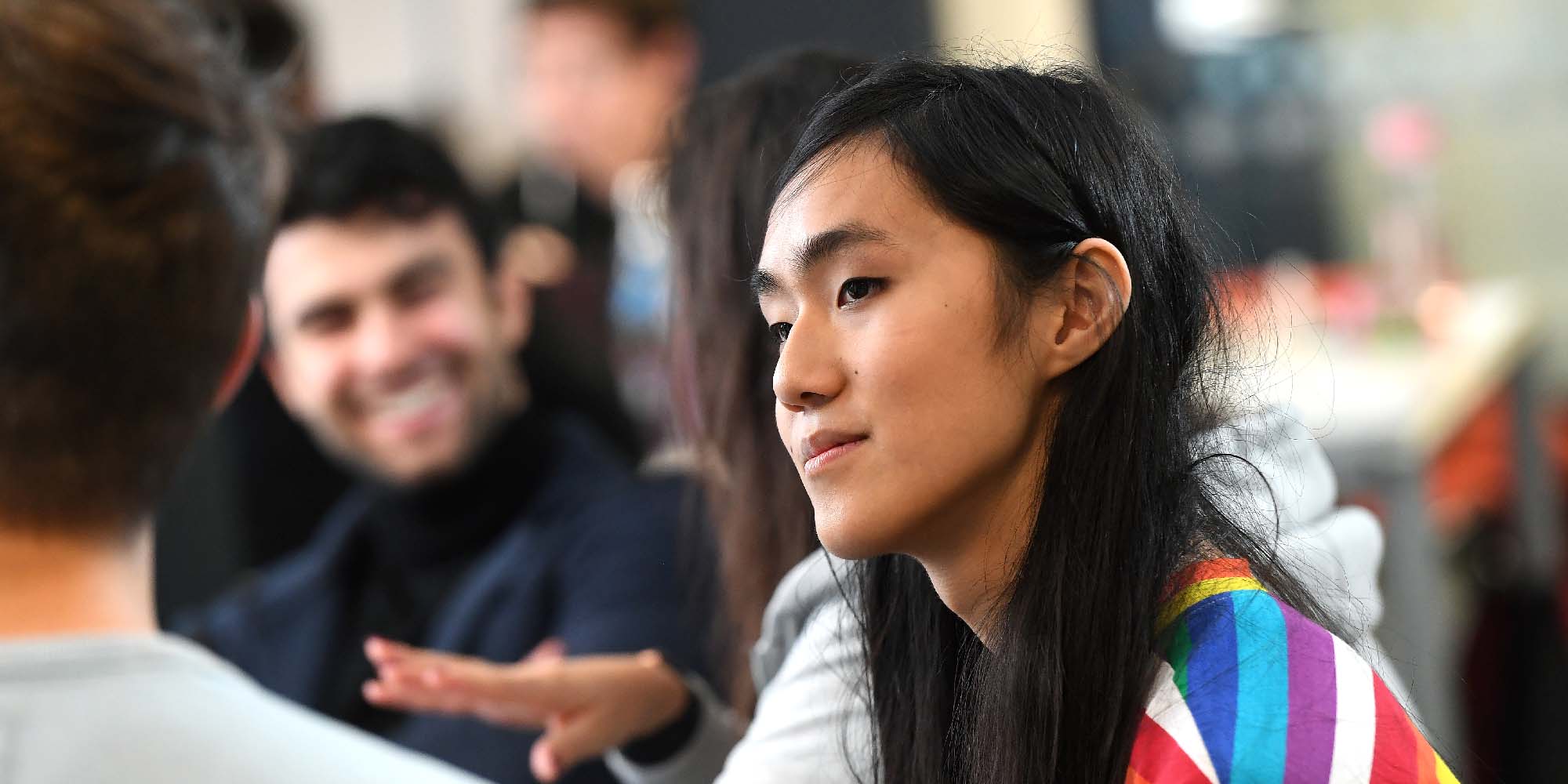Postgraduate research opportunities Homogenised modelling of a poroelastic cornea, bacterial invasion and ulceration
ApplyKey facts
- Opens: Saturday 1 February 2025
- Deadline: Monday 31 March 2025
- Number of places: 1
- Duration: 36 months
- Funding: Home fee, Stipend, Travel costs
Overview
We will model the structure of the human cornea (transparent layer on the front of the eye) to understand the effects that the underlying microstructure has on the mechanical properties when the cornea is both healthy and when subject to damage and disease. We begin with a healthy cornea that due to injury or disease becomes invaded by bacteria, leading to a loss of tissue mass and then consider the healing of this defect and how the scar affects the overall transparency of the cornea.Eligibility
You should have a minimum of a 2:1 honours degree in mathematics\applied mathematics or related disciplines such as physics, biomedical\biomechanical engineering.

Project Details
In this project we will consider the mathematical modelling of the cornea, which is the clear front portion of the eye. The cornea is multiscale in nature and the structural composition is directly related to its functionality. The corneal microstructure comprises collagen fibres and water which are constituents of the stroma which is enclosed by a thick capsular layer. The cornea's fluid content and the structure and arrangement of its collagen fibres affects its biomechanics, morphology, and transparency. Due to the constituents being both solid and fluid, the cornea is a perfect candidate to be modelled via the Theory of Poroelasticity. This theory is the modelling approach used to describe the interaction between fluid flow, pressure and bulk solid deformation within a linear porous medium [1].
The cornea can be described as a poroelastic composite and therefore can be modelled via the effective governing equations developed for poroelastic composites presented by Miller & Penta (2020) [3]. This work derives the quasi-static governing equations for the macroscale behaviour of a linear elastic porous composite comprising a matrix interacting with inclusions and/or fibres, and an incompressible Newtonian fluid flowing in the pores. This model is derived via the use of the asymptotic homogenization technique [2].
The asymptotic homogenisation technique can be applied when there is a distinct length scale separation between the length of the cornea and the size of the fibres and the pores. The technique derives the new macroscale model by upscaling a fluid–structure interaction problem between the elastic constituents and the fluid phase of the corneal stroma. The resulting system of partial differential equations (PDEs) is of poroelastic type and encodes the properties of the microstructure in the coefficients of the model. This is the perfect choice of structure and modelling approach to capture the constituents of the cornea.
Due to the cornea being enclosed by a thick capsule an undrained analysis is important. This means that it is assumed that the fluid is behaving as a suspension that supports the fibre arrangement and does not exit the system during deformation. Therefore, even though the fluid has almost no velocity it still plays a crucial role in the mechanical behaviour.
Defects in the capsule are an important key feature and can be caused due to injury, disease or ageing. The defect plays a crucial role in the occurrence of many eye diseases and therefore it must be accounted for when understanding the diseased cornea. This can be implemented as a macroscale boundary condition on a poroelastic composite material. This defect alters the fluid properties as there is now a leakage of the internal fluid and this has an important influence on the pressure profiles and risk of perforation of the eye.
This defect can be modelled using a wound healing approach such as those found in Dale et al 1994 [7] and Machado et al 2011 [6] and similar works. The defect must heal to maintain the integrity of the eye and therefore a scar forms over the defect containing many collagen fibres. These fibres may not be well aligned to maintain the transparency of the cornea. In the case that the transparency of the cornea is severely affected then there is ongoing work on regenerative treatments or surgical transplantation.
This defect also leads to a further area for investigation and modelling as this can be the entry point for bacterial invasion. The bacteria invade the porous stroma and modify the pore structure. This means that diseases such as corneal ulceration are incredibly difficult to medically manage hence motivating modelling approaches to better understand the behaviour and predict patient outcomes.
During this project, you will have the opportunity to develop their skills in mathematical and numerical modelling. They will become familiar with the theory of poroelasticity, multiscale modelling and homogenisation. This includes but is not limited to continuum mechanics, geometry, PDEs and asymptotics. The project will also involve numerical simulations using mainly Comsol Multiphysics and Matlab, however there is no requirement that you should know how to use this software prior to the project. Prior biological experience is not necessary; however, you should have a keen interest in learning about the physiology of the eye.
References
[1] Raimondo Penta, Laura Miller, Alfio Grillo, Ariel Ramírez-Torres, Pietro Mascheroni, and Reinaldo Rodríguez-Ramos. "Porosity and diffusion in biological tissues. Recent advances and further perspectives." Constitutive modelling of solid continua (2020): 311-356.
[2] Raimondo Penta and Alf Gerisch. "An introduction to asymptotic homogenization." Multiscale Models in Mechano and Tumor Biology: Modeling, Homogenization, and Applications. Springer International Publishing, 2017.
[3] Laura Miller, and Raimondo Penta. "Effective balance equations for poroelastic composites." Continuum Mechanics and Thermodynamics 32.6 (2020): 1533-1557.
[4] Misson, Gary P. "Circular polarization biomicroscopy: a method for determining human corneal stromal lamellar organization in vivo." Ophthalmic and Physiological Optics 27.3 (2007): 256-264.
[5] Misson, Gary P. "The theory and implications of the biaxial model of corneal birefringence." Ophthalmic and Physiological Optics 30.6 (2010): 834-846.
[6] Machado, Maria JC, et al. "Dynamics of angiogenesis during wound healing: a coupled in vivo and in silico study." Microcirculation 18.3 (2011): 183-197.
[7] Dale, Paul D., Philip K. Maini, and Jonathan A. Sherratt. "Mathematical modeling of corneal epithelial wound healing." Mathematical biosciences 124.2 (1994): 127-147.
Further information
Please note that this opportunity will commence 1 October 2025.
You will also have the opportunity to interact and visit the Department of Civil and Environmental Engineering at the Politecnico di Milano, Italy to interact with experts in eye biomechanics.
Funding details
The funding covers a tax-free stipend which will be set at the UKRI minimum stipend level and covers the tuition fees
Home Students
To be eligible for a fully funded UK home studentship you must:
- Be a UK national or UK/EU dual national or non-UK national with settled status / pre-settled status / indefinite leave to remain / indefinite leave to enter / discretionary leave / EU migrant worker in the UK or non-UK national with a claim for asylum or the family member of such a person, and
- Have ordinary residence in the UK, Channel Islands, Isle of Man or British Overseas Territory, at the Point of Application, and
- Have three years residency in the UK, Channel Islands, Isle of Man, British Overseas Territory or EEA before the relevant date of application unless residency outside of the UK/ EEA has been of a temporary nature only and of a period less than six years
While there is no funding in place for opportunities marked "unfunded", there are lots of different options to help you fund postgraduate research. Visit funding your postgraduate research for links to government grants, research councils funding and more, that could be available.
Apply
Number of places: 1
If multiple candidates are identified then a shortlisting and interview process will take place.
To read how we process personal data, applicants can review our 'Privacy Notice for Student Applicants and Potential Applicants' on our Privacy notices' web page.
Mathematics and Statistics - Mathematics
Programme: Mathematics and Statistics - Mathematics

